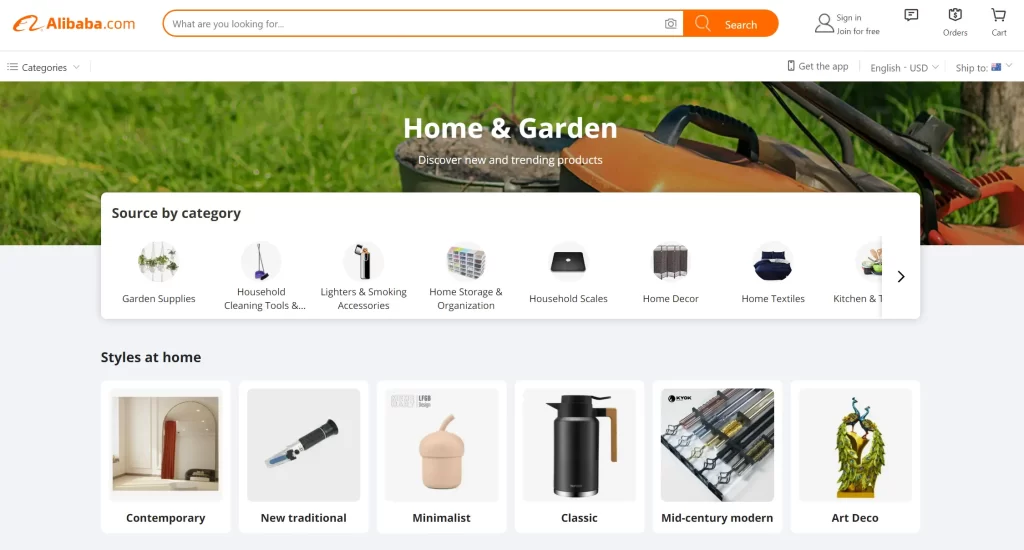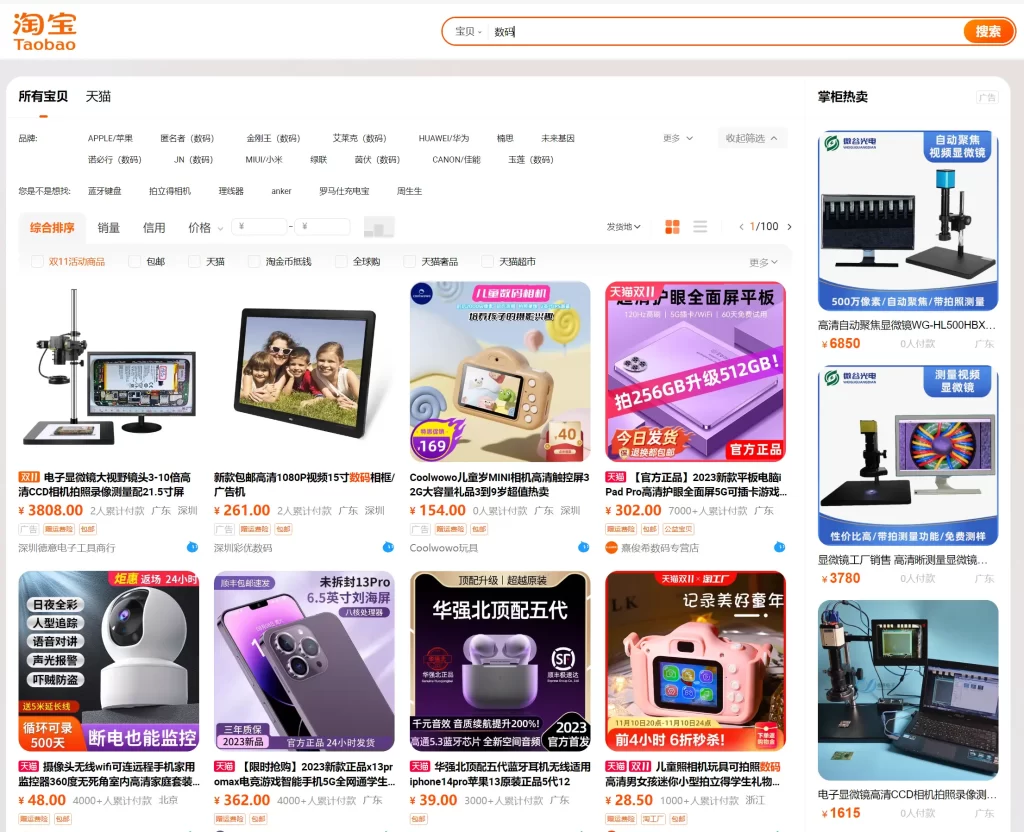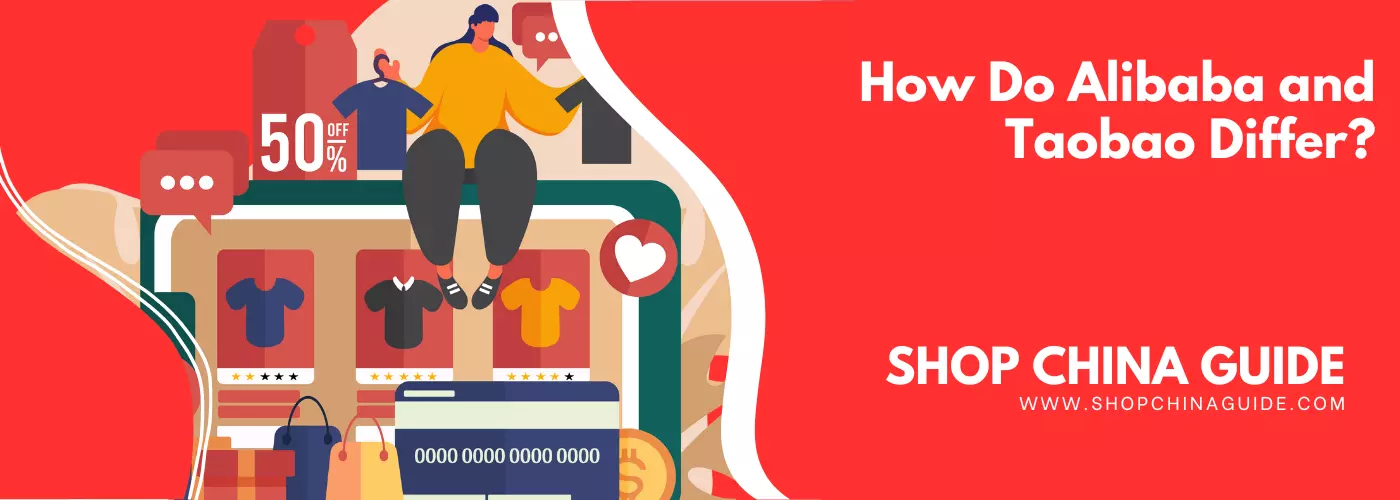In the landscape of global e-commerce, Alibaba Group stands as a colossus, having redefined online shopping with its diverse range of platforms, each tailored to meet distinct market needs.
This article focuses on two of the conglomerate’s crown jewels: Alibaba and Taobao. Alibaba serves as a gateway for businesses around the world to access the manufacturing might of China, facilitating B2B transactions with an emphasis on wholesale and mass production. Taobao, in contrast, is the consumer’s playground, a digital bazaar that caters to the individual shopping needs of the vast Chinese population, offering a more personal, B2C and C2C experience. The purpose of delineating the differences between these two platforms is not only to showcase the multifaceted approach of Alibaba Group to e-commerce but also to underline the strategic nuances that make each platform unique in its own right. As we proceed, we will explore how these differences define user interaction, market penetration, and the overall business ethos of each platform, thus setting the stage for a deeper understanding of Alibaba Group’s commercial empire.
Alibaba’s Business Model

B2B Market and Customer Segmentation
Alibaba has strategically positioned itself as a leader in the B2B sector, targeting a market that consists of businesses seeking wholesale products and manufacturing services. The platform primarily serves small to medium-sized enterprises (SMEs) that are looking to source goods in bulk for resale or production purposes. Alibaba’s success lies in its ability to connect businesses across the globe with Chinese manufacturers, offering a diverse range of products and the possibility of customization according to the buyer’s needs.
Core Services and Features
The cornerstone of Alibaba’s offering is its extensive range of services designed to facilitate international trade. It provides businesses with access to a vast network of suppliers, secure payment services, and logistics solutions that simplify the complexities of cross-border transactions. The platform’s trade assurance and supplier verification systems stand out as key features that foster trust and safety for both buyers and suppliers engaging in international trade.
Empowering SMEs and Wholesalers
Alibaba’s commitment to empowering SMEs is evident in its approach to wholesale trading. The platform offers tools and services that lower the barrier to entry for smaller businesses looking to compete in the global market. With Alibaba, SMEs can negotiate deals directly with manufacturers, access competitive pricing, and take advantage of logistics and payment solutions that are typically out of reach for smaller players.
The Role of 1688.com
Within Alibaba’s ecosystem, 1688.com serves as a domestic wholesale platform that is crucial for supporting the local Chinese market. 1688.com operates similarly to the Alibaba International platform but is tailored specifically for the Chinese domestic B2B transactions, offering a localized solution for sourcing and wholesale purchasing within China. This platform is particularly beneficial for SMEs within China, providing them with access to a wide range of products and suppliers that can meet their business needs quickly and efficiently.
You may also like: Can I only buy 1 item on 1688.com? (Method)
Through Alibaba and its subsidiary platforms like 1688.com, the company has created a comprehensive environment that supports businesses of all sizes, enhancing their capabilities to operate both locally and globally.
Taobao’s Business Model

Market Focus and Consumer Base
Taobao is a bustling marketplace that resonates with the consumer heartbeat of China, aligning itself primarily with B2C and C2C interactions. It’s a platform where individuals not only seek to purchase from a myriad of product listings but also engage in selling, establishing a vibrant ecosystem of buyers and sellers. This dual-focus approach caters to a diverse demographic, from the urban youth seeking the latest fashion to families in search of daily necessities.
Principal Services and Characteristics
Key to Taobao’s success is its user-friendly interface and social commerce features, which include instant messaging and consumer reviews, fostering a community-driven shopping experience. Live streaming has also become a cornerstone of its strategy, blending entertainment with immediate purchasing opportunities. Furthermore, Taobao has perfected the art of personalized recommendations through its sophisticated algorithms, enhancing user engagement and repeat purchases.
Catering to the Chinese Consumer
Understanding and adapting to local preferences has been Taobao’s forte. It has seamlessly integrated local payment systems like Alipay, and offers comprehensive customer service to address any concerns or queries that arise during the shopping experience. Tailoring its operations to regional shopping festivals, such as the colossal Singles’ Day event, Taobao taps into the cultural zeitgeist, turning shopping into a national celebration.
By examining Taobao’s model, we can see how it has become a daily fixture in the lives of Chinese consumers. Its commitment to creating a community-centric, convenient, and comprehensive shopping environment has made it an unparalleled force in the Chinese e-commerce sector.
Comparing Platform Operation and Interface
User Interface and Shopping Experience
Alibaba and Taobao offer distinct experiences tailored to their respective audiences. Alibaba’s interface is utilitarian, reflecting its business-centric nature. It emphasizes functionality, with a clean, professional layout that facilitates the sourcing and procurement process. On the other hand, Taobao’s interface is colorful and dynamic, reflecting the vibrancy of a retail marketplace. It’s designed for consumer engagement, with interactive elements and a visually rich layout that encourages browsing and discovery.
Search Functionality and Product Display
The search functionality on Alibaba is robust, prioritizing specifications and bulk-order details. Product displays are typically straightforward, providing detailed descriptions and supplier information, emphasizing trade information over visual appeal. In contrast, Taobao’s search engine is more consumer-friendly, focusing on keywords and trends. Product displays on Taobao are more visually oriented, with multiple images, videos, and even augmented reality options to give consumers a better feel for the items.
By examining the operational and interface design of Alibaba and Taobao, we can appreciate the nuanced approach each platform takes to serve its user base. Alibaba’s design is built for efficiency in B2B transactions, whereas Taobao is optimized for a rich B2C shopping experience that’s as much about discovery as it is about the purchase.
Market Positioning and Strategy
Marketing Strategies
Alibaba and Taobao deploy distinct marketing strategies that reflect their target audiences. Alibaba employs B2B marketing tactics, which include trade shows, online webinars, and industry-specific content marketing to engage businesses worldwide. Its marketing is focused on demonstrating reliability and efficiency in bulk trading. Taobao, in contrast, leverages B2C marketing strategies such as social media campaigns, influencer partnerships, and big sales events like the famous “Double 11” (Singles’ Day), which harness the collective buying power of consumers.
Brand Positioning
Each platform has carved out a clear brand positioning based on their target customer. Alibaba positions itself as a global trade facilitator, emphasizing its role in empowering businesses to expand their reach. It’s seen as a professional, reliable, and essential partner for global trade. Taobao, with its finger on the pulse of China’s retail consumer market, positions itself as a lifestyle brand, integrating shopping with entertainment and community engagement, making it a daily destination for millions of Chinese consumers.
The strategic approach to market positioning by Alibaba and Taobao has been central to their success. By understanding and catering to the specific needs of their users, they have built strong brand identities that resonate with their respective audiences.
International vs. Local Markets
Alibaba’s Global Reach
Alibaba has meticulously crafted its platform to serve the international market. By offering multilingual interfaces, customizable supply chain solutions, and localization services, it breaks down the barriers that typically complicate international trade. Alibaba’s global payment systems, like Alipay, facilitate cross-border transactions, ensuring that businesses around the world can trade with ease. The platform’s extensive logistics network, including partnerships with local couriers, allows for efficient global distribution.
Taobao’s Domestic Focus and International Strategy
Taobao, while predominantly serving the Chinese market, has begun exploring international expansion through its sister platform, AliExpress. It primarily caters to the local market by aligning with China’s shopping habits and cultural nuances, including the integration of local payment methods and support for Mandarin language. However, its international strategy is reflected in how AliExpress adapts Taobao’s successful model for global consumers, offering a localized shopping experience to users outside of China.
Alibaba’s and Taobao’s strategies for engaging with international and local markets underscore their adaptability and understanding of consumer behavior across different cultures. Alibaba’s global framework is built to support businesses worldwide, while Taobao’s expansion through AliExpress shows its potential to replicate its domestic success internationally.
User Experience and Consumer Protection
User Experience Design
The user experience (UX) on Alibaba and Taobao is tailored to their specific audience’s needs. Alibaba’s UX design is business-oriented, with a focus on efficiency and clarity to support the procurement process. It provides tools for supplier verification and trade assurance to promote a secure business environment. Taobao, on the other hand, provides a consumer-oriented UX, with a lively interface that emphasizes personalization and social interaction. It incorporates elements such as personalized feeds and interactive live streams to engage its users in a more immersive shopping experience.
Consumer Protection Measures
When it comes to consumer protection, Alibaba and Taobao have different approaches that reflect their platforms’ nature. Alibaba offers a comprehensive Trade Assurance program to protect buyers in the B2B market, ensuring that suppliers fulfill their obligations. Taobao focuses on the consumer, with guarantee refunds, authenticity verifications, and a robust customer service platform to address disputes and concerns. Both platforms invest heavily in fraud detection and prevention mechanisms, but their implementation is customized to suit the transaction types and risks associated with their respective users.
You may also like: Beware: Alibaba, AliExpress & Taobao Scams to Know.
Alibaba’s and Taobao’s commitment to user experience and consumer protection is a testament to their understanding of the different challenges and expectations in B2B and B2C marketplaces. Each platform’s measures are designed to instill confidence in their users, fostering a safe and reliable environment for trade and commerce.
Conclusion
Impact of Platform Differences on Decision Making
The disparities between Alibaba and Taobao significantly influence the decision-making processes of businesses and consumers. For businesses, Alibaba’s B2B focus means a decision is often predicated on bulk pricing, supplier reliability, and global reach. Taobao, with its B2C and C2C orientations, influences consumer decisions through product variety, personalization, and community engagement. Businesses must navigate Alibaba’s comprehensive trade services, while consumers engage with Taobao’s immersive and interactive shopping experience.
Future Trends and Recommendations for E-Commerce Platforms
Looking to the future, e-commerce platforms are likely to continue evolving, with a strong emphasis on personalization, AI-driven services, and cross-border e-commerce. Alibaba and Taobao may expand their reach by integrating more advanced technologies to enhance user experience and streamline the trade process. For new and existing platforms, a recommendation would be to focus on creating seamless, user-centric experiences and on strengthening consumer protection to build trust and loyalty in a competitive market.
In summary, understanding the unique attributes and strategies of Alibaba and Taobao can offer valuable insights into the broader e-commerce landscape. Their differentiation not only serves their specific target audiences effectively but also sets a benchmark for emerging platforms to innovate and thrive in the digital economy.

